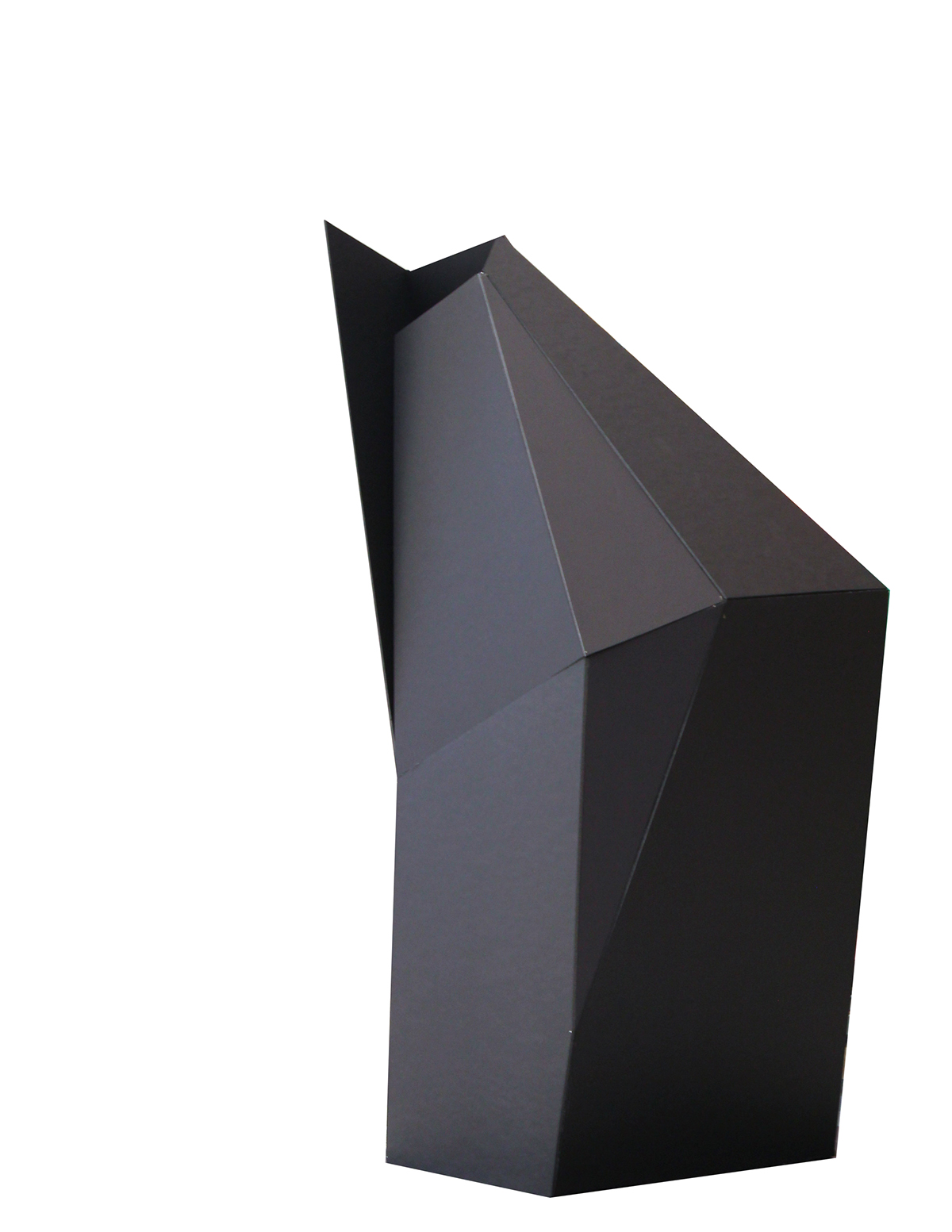GEOMETRIC FOAMCORE SCULPTURE
I wanted to explore the thematic topic of family in a formalist manner by representing the idea through a polygonal sculpture and employing a simple and distinct geometric sculptural language, by using irregular triangles and quadrilaterals. I was resourceful to use and manipulate these simple flat shapes that combined to create a more complex three-dimensional sculptural object, standing as a testament to its subject matter and construction. The means by which the sculpture evolves and grows, along with the integration of the modular forms is how I portrayed the theme of a FAMILY.

Low-poly is a term used in 3D graphic computing to describe a polygon mesh model made from a low number of polygons to optimize performance, as opposed to a detailed high-poly model. I was inspired by this and the aesthetic conveyed by Xavier Veilhan’s sculptures along with graphic illustrators and aimed to explore the expressive potential of geometry and polygons. This led me to create a comparative study of three artists from each discipline.
I was equally inspired by the forms found in angular modern architecture and so-called crystalline architecture. I also found fascination in the American minimalist sculptors such as Tony Smith. What I found fascinating about Smith is his three-dimensional sculptures are largely influenced by the flat planes of abstract expressionism.
I was equally inspired by the forms found in angular modern architecture and so-called crystalline architecture. I also found fascination in the American minimalist sculptors such as Tony Smith. What I found fascinating about Smith is his three-dimensional sculptures are largely influenced by the flat planes of abstract expressionism.
There was less envisioning involved with this piece, similar to how I approached my CLAY sculpture as compared to my other artworks which are more directive and technically planned. I wanted to make the piece comprehensible from any viewpoint – as a sculpture in the round, eliminating the notion of a front and back of the sculpture. From creating a smaller-scale macquette, I established a foundation and responded to the forms and hollow spaces, this aspect really challenged me to use my imagination.


I settled for a modular design in the final sculpture as I found this method to be more practical for creating a sculpture of this scale. At the same time, I did not want to give it the impression of a monument, rather I wanted its proportions to be scaled closer to the human body.
I composed the sculpture off a monochromatic palette with predominately black foamcore. The interior elements of the sculpture was carefully taken into consideration. I had to ensure the angle of the quadrilateral supports were precise in order to support the structure properly and allow the forms to connect together seamlessly. Another challenge was ensuring the forms that covered the hollow areas were proportional to each other. These factors are what placed high importance on the technical precision of the media. I wasn’t very fond of these constraints as it required a deliberate procedure and tolerated my patience. They have somewhat limited my freedom of expression considering it was not feasible to freely experiment with the forms, especially of this scale - knowing that once the board is cut, it’s cut. I made use of push pins to assemble most of the sculpture as they allowed me to fasten together the edges of the foamcore and adjust the forms freely as opposed to the permanence of glue. The pins added a modest mechanical look to my sculpture with their silver ends embedded to the corners of the foamboard.
I composed the sculpture off a monochromatic palette with predominately black foamcore. The interior elements of the sculpture was carefully taken into consideration. I had to ensure the angle of the quadrilateral supports were precise in order to support the structure properly and allow the forms to connect together seamlessly. Another challenge was ensuring the forms that covered the hollow areas were proportional to each other. These factors are what placed high importance on the technical precision of the media. I wasn’t very fond of these constraints as it required a deliberate procedure and tolerated my patience. They have somewhat limited my freedom of expression considering it was not feasible to freely experiment with the forms, especially of this scale - knowing that once the board is cut, it’s cut. I made use of push pins to assemble most of the sculpture as they allowed me to fasten together the edges of the foamcore and adjust the forms freely as opposed to the permanence of glue. The pins added a modest mechanical look to my sculpture with their silver ends embedded to the corners of the foamboard.






As I continued to put together the sculpture, I felt it was becoming less low-poly-like, and less complex than I had intended – rather it resembles minimalist sculpture at the same time, with spare forms. I opted to leave some of the hollow areas open, similar to the maquette, as I thought it would be more unique this way, to introduce a fragmented accent.


